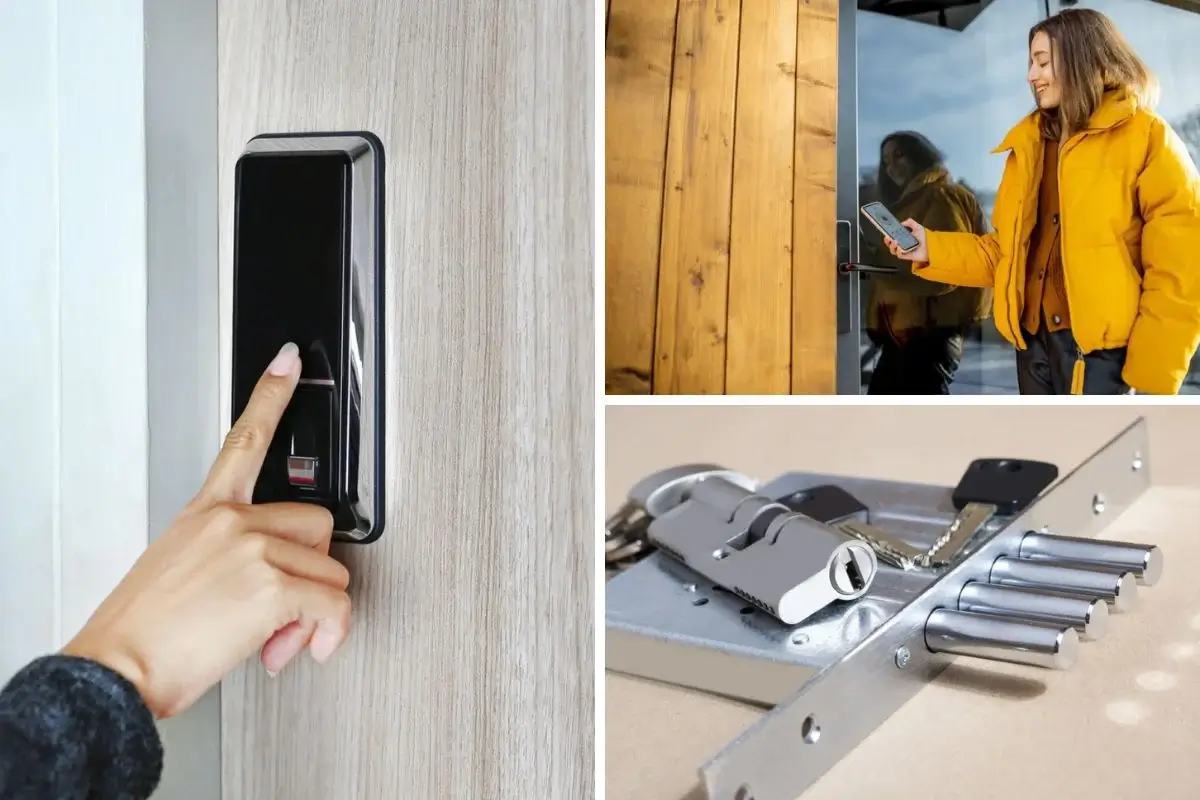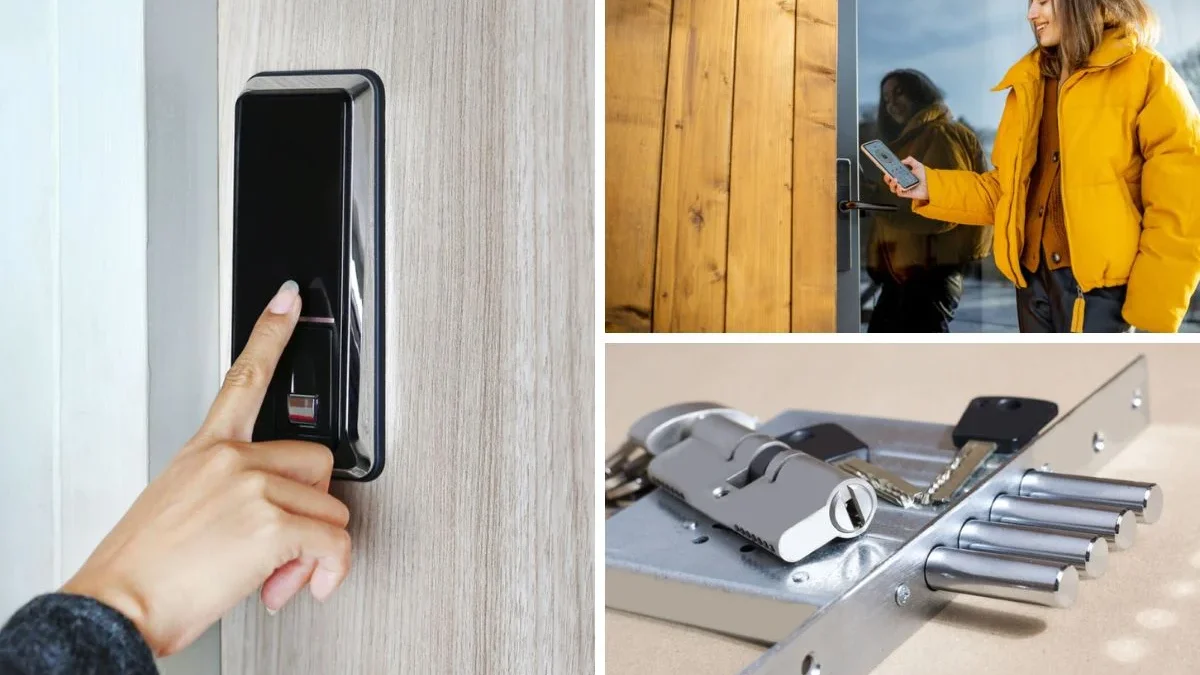
When it comes to maintaining and upgrading your home, one often overlooked aspect is the installation of access doors. Access doors provide a convenient way to access essential systems and areas in your home, such as plumbing, electrical panels, or HVAC units. They offer functionality and aesthetics, making them a necessary addition to any homeowner’s toolkit. This article will explore the critical considerations for installing access doors in your home, ensuring you make informed decisions that align with your needs.
Understanding Access Doors
Access doors, also known as access panels, are hinged or removable panels that provide access to concealed areas in your home. They are typically installed on walls or ceilings and are available in various sizes and materials to suit different applications. Access doors serve multiple purposes, such as providing easy access for maintenance and repairs, concealing unsightly systems, and enhancing the overall aesthetics of your living space.
Identify the Purpose
It is essential to determine the function of an access door before installing it. Determine the specific area or system that requires access and assess the frequency of use. For instance, if you need access to plumbing or electrical systems that require regular maintenance, you will need a durable and easily accessible access door. On the other hand, if it’s for occasional access, you may prioritize aesthetics and choose a door that seamlessly blends with your interior design.
Selecting the Right Material
Access doors are available in various materials, including metal, plastic, and fire-rated options. Choosing a material depends on what it will use for and what amount of durability, fire resistance, and good looks you want. For example, a Babcock-Davis BNP architectural access door with fire-rated properties would be suitable if you require an access door for fire-rated areas such as boiler rooms or electrical enclosures. Choosing a material that can withstand environmental conditions and provide the necessary level of security is essential.
Size and Location
Determining the appropriate size and location for your access door is crucial for seamless integration into your home. Measure the dimensions of the access point carefully to ensure a proper fit. Consider how much space is available around the place to avoid problems. Additionally, think about the visual impact of the access door and how it will blend with the surrounding architecture. You want the door to be easy to open and close while still fitting in with the rest of the space.
Installation Method
Access doors can install using various methods, such as surface-mounted, flush-mounted, or recessed installation. Your chosen installation method depends on your preferences and the look you want. Surface-mounted doors are installed directly onto the wall or ceiling, creating a prominent appearance. Flush-mounted doors sit flush with the wall or ceiling, offering a more seamless look. Recessed doorways are set deeper into the wall, providing a concealed access point that is less noticeable. Think about the style of your house and how much privacy you want when choosing how to install the method.
Security and Accessibility
While access doors provide convenient access to concealed areas, it is essential to consider security and accessibility factors. If the site behind the access door contains valuable equipment or poses safety risks, you may want to prioritize security features, such as locks or tamper-proof mechanisms. Additionally, consider the accessibility needs of individuals in your household. If anyone has mobility limitations, ensure they can efficiently operate the access door or consider alternative accessibility options, such as remote-controlled doors.
Soundproofing and Insulation
Soundproofing becomes essential in specific applications, such as access doors near noisy HVAC units or home theaters. Look for access doors that offer sound-dampening properties to minimize noise transfer between rooms. Insulation is another aspect to consider, primarily if the access door is in an area that requires temperature control. Insulated access doors can help maintain your home’s desired climate and energy efficiency.
Maintenance and Durability
Access doors may require periodic maintenance and should build to withstand regular use. Before deciding on a door, you should consider how long-lasting the materials are and how simple they are to maintain and fix. If the access door exposes to external elements, such as outdoor applications, choose a material resistant to corrosion and weathering. Prioritize quality and longevity to ensure your access door remains functional and visually appealing for years.
Compliance with Building Codes
Make sure that the access door you plan to install conforms with all of the rules and codes that are in effect in your area before you install it. Certain areas of your home, such as electrical or plumbing systems, may have specific requirements regarding access points. Familiarize yourself with the applicable codes to ensure that your access door meets the necessary standards for safety and functionality.
Consider Future Needs
When selecting an access door, consider any potential future needs or changes in your home. Will you require additional access points in the same area? Are there any upcoming renovations or expansions that may impact the location or size of the access door? Planning can save you time and resources in the long run by keeping you from needing to reinstall or modify access doors.
Professional Installation
While some access doors can install as a DIY project, complex installations or specialized requirements may require professional assistance. Consult a professional contractor or handyman if you need clarification on the installation process or specific customization. They can ensure the access door install correctly, minimizing the risk of damage or improper fit.
Consider Fire Safety
In addition to fire-rated access doors for specific areas, it’s essential to consider overall fire safety within your home. Ensure that access doors do not obstruct fire escape routes, emergency exits, or firefighting equipment. Consult with a fire safety professional to ensure that your access doors do not compromise the safety of your household in case of a fire emergency.
Aesthetics and Integration
While functionality is a primary consideration, it’s also essential to select an access door that complements the aesthetics of your home. Look for design options that blend seamlessly with your existing décor or architectural style. Some access doors offer customizable finishes, allowing you to match them to your wall color or texture. By considering aesthetics, you can ensure that the access door enhances the overall visual appeal of your living space.
Maintenance Access
Apart from providing access to essential systems, access doors can also serve as entry points for regular maintenance and inspections. When choosing an access door, consider the ease of maintenance access. Opt for doors that provide ample space to perform necessary tasks, such as cleaning or equipment servicing, without causing any inconvenience or damage.
Weather Resistance
If you plan to install an access door in an outdoor location or an area exposed to harsh weather conditions, prioritize weather resistance. Look for materials resistant to moisture, UV rays, and extreme temperatures. It will help ensure the longevity and durability of the access door, preventing premature wear and tear due to weather exposure.
Seek Recommendations and Reviews
Before making a final decision, get advice from people you trust or read reviews from people who have entered the access doors. Their knowledge and experiences can tell us a lot about specific brands, types, or installation methods. Learning from the mistakes and successes of others is always an excellent way to make an informed decision and avoid problems.
Warranty and Support
When buying an access door, think about the guarantee that comes with it. A reliable contract can provide peace of mind, knowing that the manufacturer will address any defects or issues with the door. Additionally, check if the manufacturer includes customer support or technical assistance to assist you with any questions or concerns regarding the installation or maintenance of the access door.
Energy Efficiency
In today’s world, where people care about the environment, the energy economy is an important thing to think about. Look for access doors that offer insulation properties and minimize air leakage. Well-insulated doors can help prevent energy from escaping, lowering the cost of heating and cooling your home. A more eco-friendly and sustainable home can achieve with the help of access doors that minimize energy use.
Consider Different Opening Mechanisms
Access doors can feature various opening mechanisms, such as hinges, locks, latches, or removable panels. Evaluate the benefits and drawbacks of each approach, and then pick the one that will serve your needs the most effectively. A hinged door with a simple lock may be sufficient for areas requiring frequent access, such as utility rooms. Removable panels, however, allow for larger openings and easier maneuverability for bulky equipment or furniture.
Integration with Home Automation
Consider access doors that integrate into your setup if you have a home automation system. Smart access doors can control remotely, allowing you to open or close them with a mobile app or voice commands. This level of automation adds convenience and enhances the overall technological sophistication of your home.
Budget Considerations
Putting quality and usefulness first is essential, but it’s also important to consider your budget. Access doors come in a wide range of prices based on the brand, material, and features. Set up a realistic budget and look into choices that fit with what you can afford. Investing in a durable and reliable access door that will last long and won’t need frequent maintenance can save you money.
Consultation with Professionals
If you need more clarification about installing access doors in your home, consider consulting with professionals in the field. Architects, interior designers, and contractors can give helpful advice and ideas based on their expertise and previous experience. They can help you make informed decisions, assess requirements, and ensure smooth and efficient installation.
Safety Precautions
During installation, you should put safety first to avoid accidents or injuries. Please read the manual thoroughly and get assistance if you have any questions. If you’re hiring professionals, verify that they are licensed, insured, and experienced in installing access doors to maintain a safe working environment.
Regular Inspections and Maintenance
Upon completion of the installation of the access doors, make it a habit to inspect and maintain them regularly. Check for signs of damage, like cracks, rust, or loose locks, and fix them immediately if you find any. Clean the doors regularly to remove dust, debris, or any buildup affecting their functionality. By staying proactive in maintenance, you can prolong the lifespan of your access doors and ensure their optimal performance.
Conclusion
Installing access doors in your home requires careful consideration of various factors, including warranty, energy efficiency, opening mechanisms, integration with home automation, budget, consultation with professionals, safety precautions, and regular inspections. Considering these things will help you choose options that fit your needs, interests, and budget. Access doors provide functional access to concealed areas and enhance your home’s overall convenience, security, and aesthetics.
Ava Clarkson
Related posts
Stay connected
- How LoveOn Chat Is Becoming the Most Versatile AI Companion for Digital UsersThe internet keeps shifting toward hyper-personal interaction, and AI companions are at the center of this shift. What used to be simple chatbots are now evolving into emotionally aware, adaptive, and multi-functional digital partners. Among the new generation of platforms, LoveOn Chat is becoming one... The post How LoveOn Chat Is Becoming the Most Versatile […]

